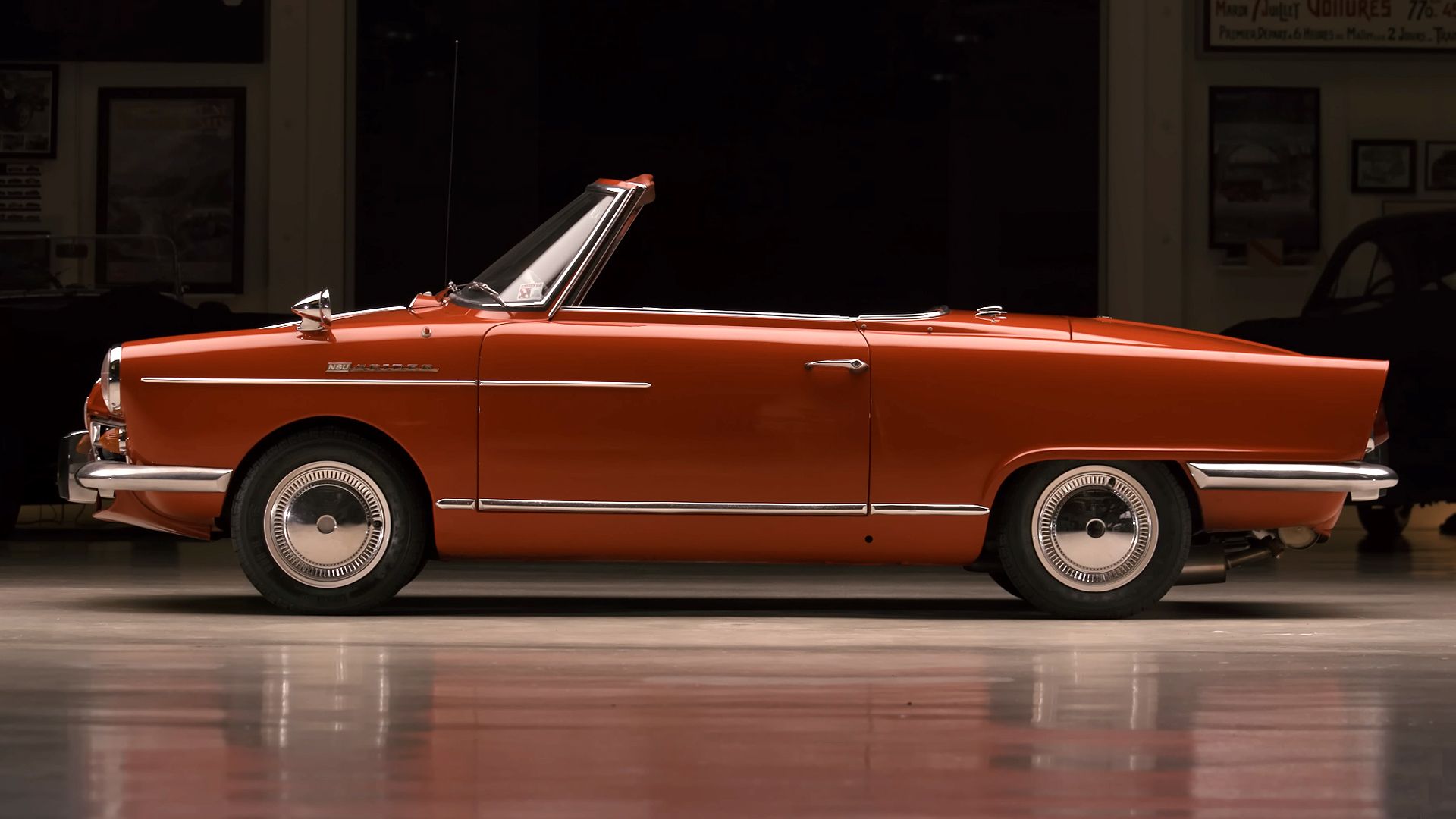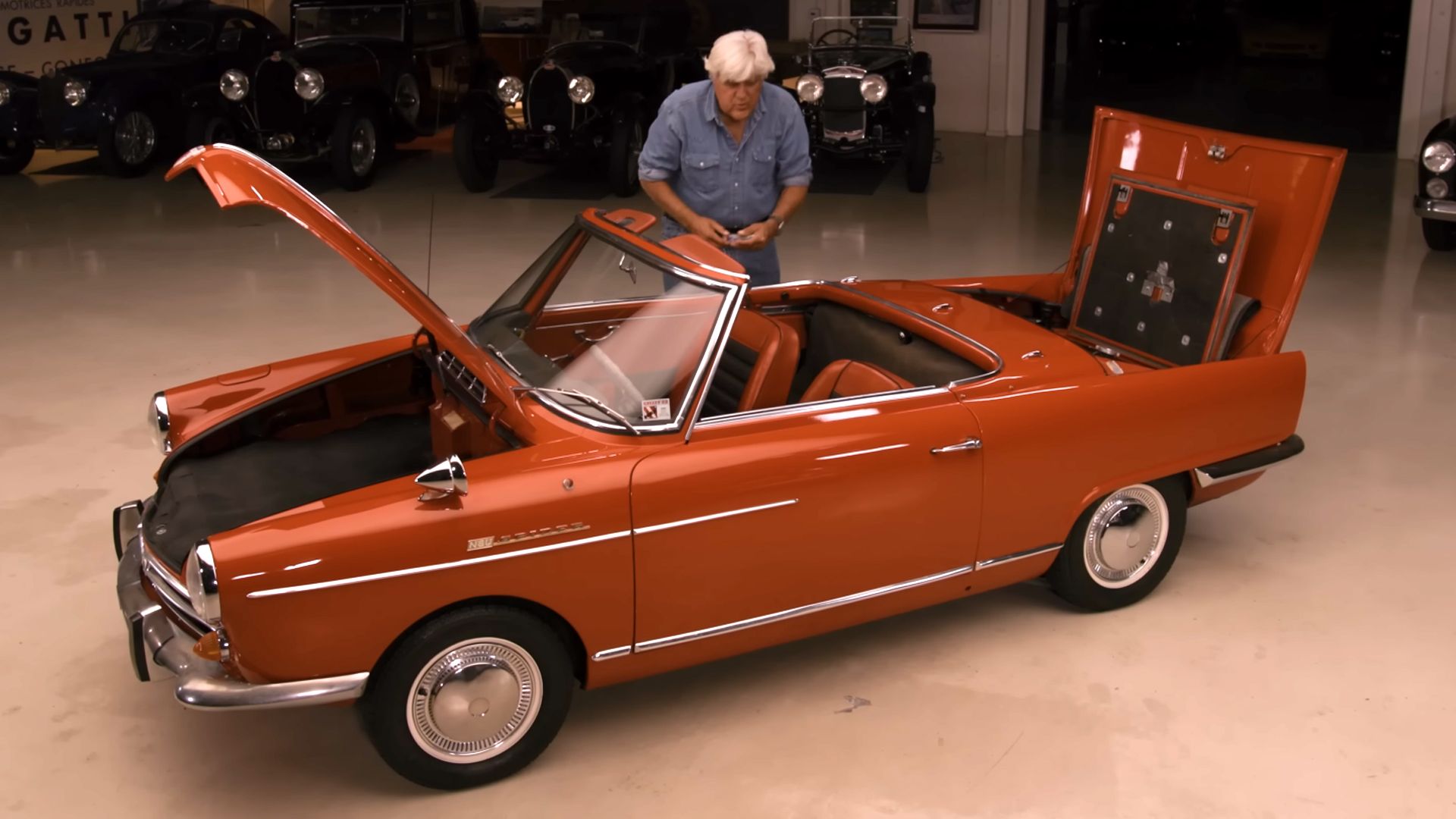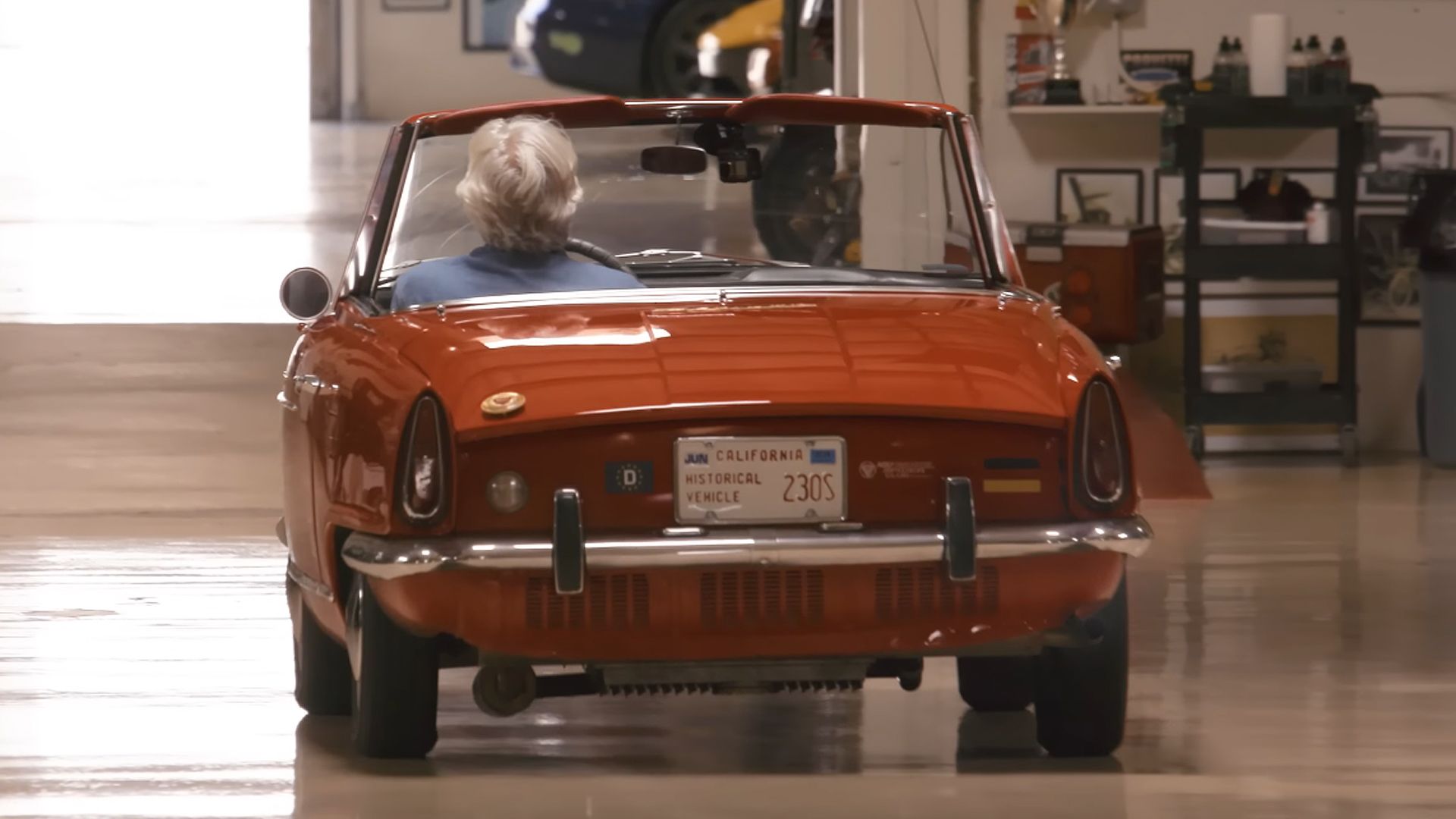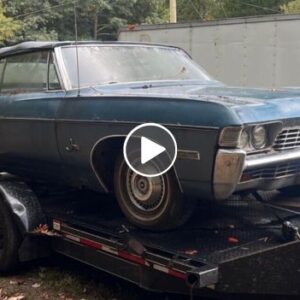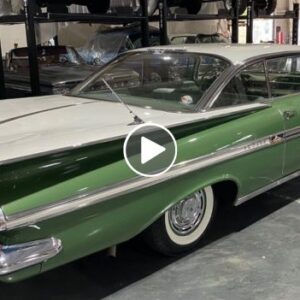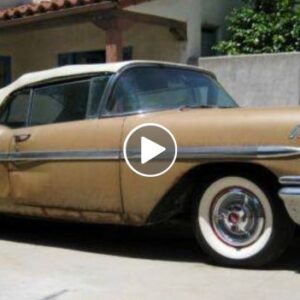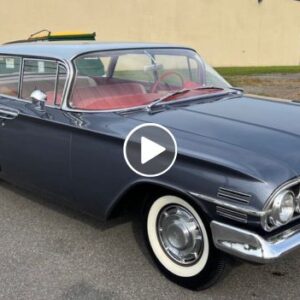When it comes to Wankel engines, the car that immediately pops to mind is the Mazda RX-7 or RX-8. That said, Mazda did not start the rotary engine revolution, given the first car to debut the Wankel concept was the NSU Spider, a car that Jay Leno has and reviews for his YouTube channel, Jay Leno’s Garage.
Unlike piston engines, the Wankel engine is a relatively new one, developed in 1954 by the German mechanical engineer Felix Heinrich Wankel. Wankel wanted to make an engine that did not have the strong vibrations of a piston engine, and while his machine was a good one, it did not find its way into vehicles, at least not directly. Later, after NSU’s engineer Hanns Dieter Paschke reworked it to make it cheaper to mass-produce, NSU launched the Spider. Interestingly, this is the reason why cars carry Wankel engines based on Paschke’s design, calling it the KKM 57P instead of Wankel’s DKM54.
There’s a reason why Jay Leno has one in his garage, something he lets his audience know early on, as he delights in its almost “eerie ride”, with no vibrations at all, even at 65-70 mph. Here’s more of Leno talking about the first rotary-engined car, the NSU Spider, and why it is a cool classic car.
Jay Leno Is A Fan Of The Wankel Engine But Not Its Maker
Leno starts by talking about how the steering of the NSU Spider feels like power steering because it’s so light. The gearhead and talk show host likens it to being in a dinghy out in the ocean, jokingly comparing it to the Toyota Prius which he feels looks almost like a cruise ship.
The autophile talks about the NSU Spider and how this was a car he lusted after and now has had for a while, although he can’t recollect if it’s been 15 or 20 years. He finally introduces the car as a 1966 NSU Wankel Spider, the first Wankel-engined car, and tells the audience that if they haven’t heard of it, well, it’s because not too many came off assembly lines.
Leno further reveals that this was the first Wankel-engined car and while many people think that it was Mazda who started to use the Wankel engines, they thought wrong. The Wankel engine was also the first new engine of the 20th century because everything else had already happened in the 1800s, from internal combustion to steam, turbine, and even electric.
So, given this was new tech, this was the first big innovation of the 20th century when it came to automotive engines. Unfortunately, as Leno pointed out, while Wankel was a brilliant guy, he was a Nazi, and “it’s a shame when bad people do good or interesting things.”
The NSU Spider Was The First Wankel-Engined Car
Leno then shows the audience how a Wankel engine works, by first digging out the frame of the engine, and further displaying where the spark plugs go. A smaller triangular piece of metal, much like the piston in a more traditional internal combustion engine, rotates within this frame, and together, this forms a single rotor. When it comes to Mazda, they have two such rotors.
Wankel made this engine good enough to make NSU bet its entire automotive future on it. NSU was a German automobile manufacturer founded in 1873 and by 1969, soon after the NSU Spider, Volkswagen acquired it. Later, VW merged NSU with Auto Union, ultimately resulting in the brand, Audi. Wankel’s engine may have gone into the NSU Spider, but the rotary motor often had a problem with the seals wearing off too quickly. When Mazda decided to use the Wankel engine, they found a solution, and rumor has it that all it took for better seals was an engineer noticing a pencil, ultimately using the graphite in it.
While Mazda solved the problem of the seals not lasting long enough, their use of the rotary engines wasn’t fuel efficient, as they always gave lower gas mileage than their internal-combustion engine counterparts. Plus, they needed more oil than ever, so that was another issue.
You Won’t Believe Where The Engine Of This NSU Spider Is!
Coming back to the NSU, the Spider was their premier car, designed by Bertone. Leno goes on to show what the fuss is about, explaining a trick he often plays with this particular car at car shows. So, first Leno opens the trunk to show the engine, but there is only storage space. Then he pops open the front and again, the engine is not there either. So where is the engine? It’s so tiny, exclaims Leno, that it fits in a nearly secret compartment in the trunk, hanging below. Despite the odd placement of the engine, and its less-than-impressive size, Leno feels that the Wankel engine was amazing, given it was a smooth, almost turbine-like drive. While he admits the tachometer acts up on this model, Leno warns that you have to keep an eye on it because you won’t realize how high the RPM slips up, and that’s when the rotor seals begin to get damaged in the Wankel engine.
That said, he emphasizes how this is a fun car to drive and is a four-speed one. Back in 1966, this was not an inexpensive buy, retailing for $3,600-3,800, more than a Ford Mustang, and yet the NSU Spider only made 54 horsepower. Its power lay in its light body, which weighed only around 1,500 pounds. It drives so smoothly that Leno says people stop him on the streets to ask if it goes into the water, confusing it with the Amphicar.
More Unique Things Make The NSU Spider Perfect For Jay Leno’s Garage
Jay Leno also points out the other unique aspects of the car, including the fact that it has only one spark plug and an unusual one at that. Once, Leno had to find a replacement for it just because the car stopped, cold turkey, because of a worn-out spark plug. Otherwise, Leno says this is a near bulletproof car, although its price might have been a deterrent to its popularity. It was more expensive than a Mustang, yet it looked like a toy.
That said, it was a clever creation, with an air intake on the trunk which many mistook for the gas cap. The gas cap is actually on the front end, on the right-side frame of the front trunk, given there’s no engine, so we can’t quite call it a hood.
Today, you don’t see many of these classics out and about, given most got “beat to death,” unlike the same-era Mustang and other muscle cars. Even so, the price of a good condition one is not astronomical, given that Classic.com lists one sale in 2020 at $35,000.
Meanwhile, this is hardly the only Wankel-powered vehicle that Leno has, as he also lists two top Wankel-engined motorcycles, a Suzuki RE-5 and a Hercules model, to keep the NSU Spider some rotary company. Watch the video as Leno talks more about his Wankel-powered acquisitions, and here’s a little time capsule, back when GM experimented with the rotary Corvettes.
Sources: YouTube channel Jay Leno’s Garage, Classic.com
